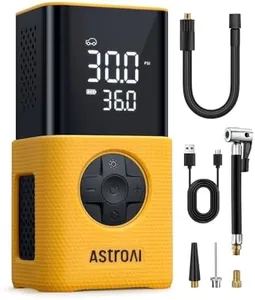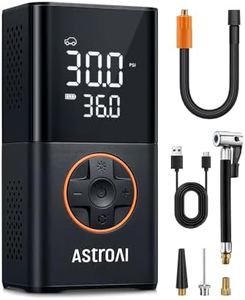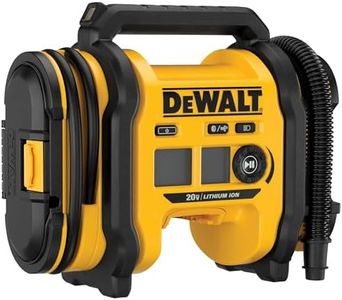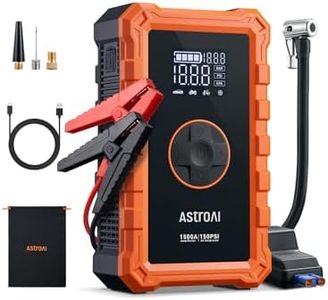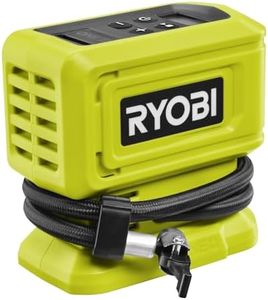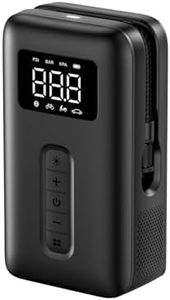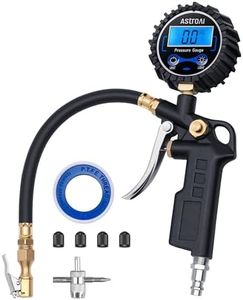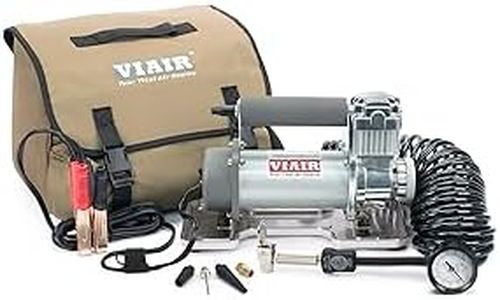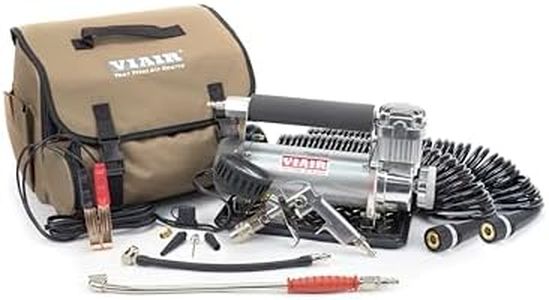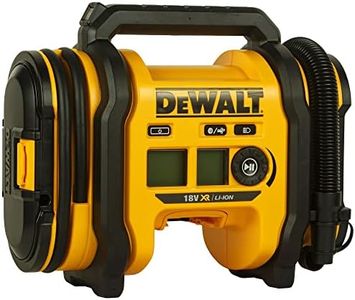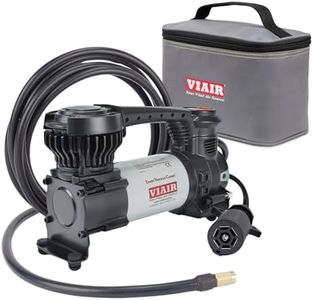We Use CookiesWe use cookies to enhance the security, performance,
functionality and for analytical and promotional activities. By continuing to browse this site you
are agreeing to our privacy policy
10 Best Tire Inflator For Rv
From leading brands and best sellers available on the web.Buying Guide for the Best Tire Inflator For Rv
Choosing a tire inflator for your RV is an important decision for your safety and comfort on the road. The right inflator ensures that your RV tires are always at the optimal pressure, which is key for stable driving, fuel efficiency, and minimizing the risk of a blowout. Since RV tires are much larger and require higher pressures than typical car tires, it's important to pick an inflator that can handle those demands. Begin by understanding your RV’s tire pressure requirements and then evaluate inflators based on features that matter to you, such as speed, ease of use, and portability.Maximum Pressure (PSI)Maximum Pressure, measured in PSI (Pounds per Square Inch), tells you the highest pressure the inflator can deliver. This is crucial because RV tires typically need higher pressures, often between 80-130 PSI. Inflators are generally divided into low-pressure (up to 50 PSI, for small vehicles), mid-range (up to 100 PSI, sometimes adequate for light RVs), and high-pressure (100 PSI and above, best for most RVs). You should always choose an inflator that delivers at least 10-20 PSI more than your tire's maximum recommended pressure to ensure efficient and reliable inflation.
Air Flow Rate (CFM/LPM)The Air Flow Rate, often displayed as CFM (Cubic Feet per Minute) or LPM (Liters per Minute), indicates how quickly the inflator can pump air. A higher air flow rate means faster inflation, which can save time, especially with large RV tires. Small and compact inflators may have lower rates (less than 1 CFM), suitable for topping off but slow for full inflation. Medium inflators (1-2 CFM) are balanced and moderate, while heavy-duty units (above 2 CFM) are best for fast inflation of large tires. If you want speed and convenience, especially when inflating multiple tires, prioritize a higher air flow rate.
Power SourceTire inflators can be powered by different sources, such as 12V DC from your RV’s cigarette lighter, direct connection to the battery, or AC power from standard outlets. 12V models offer portability and are good for emergency use, but may have limited power. Battery-connect models can handle more powerful tasks, while AC inflators are generally more suitable for home or campground use. Consider when and where you'll need to inflate your tires: If you want on-the-go flexibility, a 12V or battery-powered inflator is best. If always near an outlet, AC may suit you.
Portability and SizePortability refers to how easy it is to carry and store the inflator. Large, powerful inflators may be heavier and bulkier, which could be inconvenient if storage space in your RV is limited. Compact models are easier to handle but may take longer to inflate large tires. Choose a size and weight that you are comfortable handling and that will fit in your available storage space, while still meeting your inflation needs.
Duty CycleThe duty cycle indicates how long the inflator can run before needing a cool-down break, usually shown as a percentage or in minutes (like 'on for 10 minutes, off for 10 minutes'). A high duty cycle means the inflator can work longer without overheating, which is helpful for inflating multiple tires in one session. For occasional small top-ups, a short duty cycle is fine, but for inflating all your RV tires from low to full pressure, look for an inflator with a higher, continuous duty cycle.
Hose Length and AccessoriesThe hose length determines how easily you can reach all your tires from your preferred power source. Longer hoses make it easier to inflate tires without moving the inflator often, which is especially important for large RVs. Attachments like quick-connect valves, different nozzles, and built-in pressure gauges enhance usability. If your RV is large, or you want convenience, look for an inflator with a longer hose and useful accessories.


